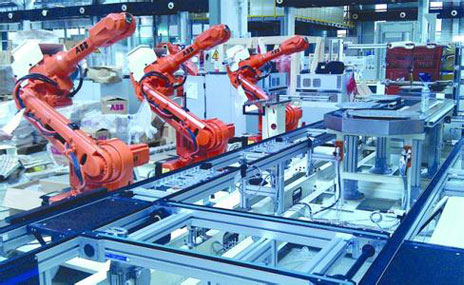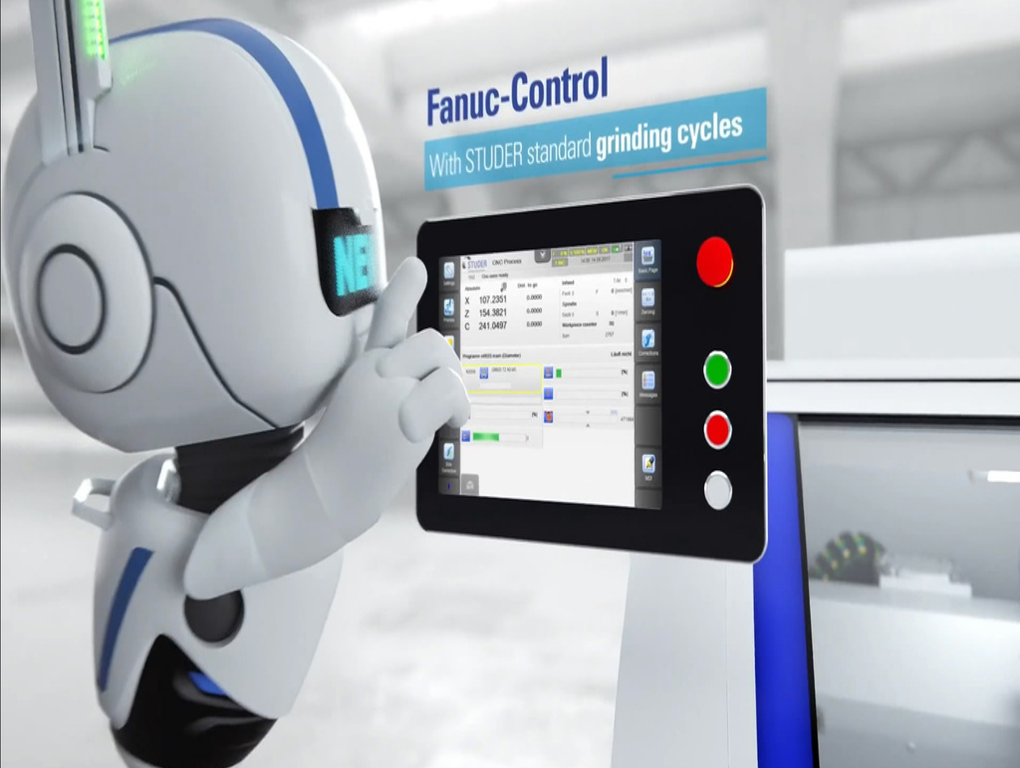
News Center
Centre de produit
Produit recommandation
Emplacement’╝ÜPage d'accueil >> News Center
How About Intelligent Manufacturing's Future?
In the current situation of China's intelligent manufacturing, there is still a significant gap between China and developed countries. If we look at it in a more macroscopic situation, we will find that domestic intelligent manufacturing still faces many problems to be solved.
From the long-term grand strategy of ŌĆ£Made in China 2025ŌĆØ released in 2015, traditional enterprises have opened the road of intelligent manufacturing transformation. It is obvious that intelligent manufacturing has become a trend of the times, and the information age has moved toward an intelligent era. China's intelligent manufacturing technology and its industrialization have developed rapidly and achieve dremarkable results. Emerging science and technology such as intelligence and industrial automation have been integrated into industrial development, and we have achieved great results compared with developed countries. However, as far as the current status of China's smart manufacturing is concerned, there is still a significant gap between China and developed countries. If we look at it in a more macroscopic situation, we will find that domestic smart manufacturing still faces many problems to be solved. In view of this, we also need to think more in the process of developing intelligent manufacturing.

From the face to the point, what are the stumbling blocks on the road to intelligent manufacturing transformation?
The two basic technologies driving intelligent manufacturing are computer chip computing speed and net work transmission speed. It is better that China has gradually acquired these two technologies, and the next key is ŌĆ£digitalizationŌĆØ. "Digitalization" includes four aspects: one is the combination of industrial software and automation; the second is industrial communication; the third is industrial safety; the fourth is industrial service. The process of implementing ŌĆ£digitalizationŌĆØ still needs to break through a series of problems.
Absence of Industrial Policy and Standards Research
Intelligent manufacturing is more important than an idea. Because the intelligent manufacturing industry has the characteristics of diversified demand and fragmentation, it is necessary to differentiate different enterprises and come up with different solutions to promote industrial upgrading. Although there are support plans from the central to the local, the overall fragmentation and lack of systemicity make it difficult to form coordinated development, and the overall effect of policy support is not ideal. Some industry responsibilities and industry planning need to be clear, and there is still a lack of industry policy and standards research.

Innovative Ability Is Not Strong, Core Technology Is Missing
As the core of intelligent manufacturing, automation equipment and intelligent software set up an Internet platform, and its carrier, the key components of the industrial robot industry, mainly rely on imports, such as high-performance AC servo motors and high-precision reducers, as well as CNC machine tools. The functional components of the field and the core components of the 3D printer laser, intelligent manufacturing many basic technologies still remain at the imitation level, the innovation ability is in sufficient, the key technology is difficult to break through, resulting in the cost of domestic intelligent manufacturing enterprises.
The intelligent manufacturing method is built on the comprehensive application of a large number of high-tech such as automation, robotics, Internet of Things, big data, cloud computing, artificial intelligence, etc. Finding the right technology source to transform the production mode of the enterprise becomes the key factor for the success of intelligent manufacturing; In reality, large-scale technology suppliers provide more complete sets of intelligent manufacturing technology solutions, and the transformation cost is high; while small and medium-sized technology suppliers are difficult to provide intelligent manufacturing technology and management modules with high matching, and the transformation effect is poor. In addition, some small and medium-sized enterprises are difficult to search for external intelligent manufacturing technology providers due to resource constraints, and it is difficult to implement effective intelligent manufacturing transformation with the company's own technology inventory.
The Company Is Single-Handed and the Industrial System Is Incomplete
For example, industrial robots, according to incomplete statistics, there are dozens of robot industrial parks built and under construction in the country, and there are thousands of robot companies, but less than 10% of them can actually produce parts or robots.

The technical threshold in the field of intelligent manufacturing is high, and it is obviously difficult torely solely on a single company to explore new areas. Industrial grade products are highly demanding in terms of digital technology, intelligent technology, network technology and new materials technology, and overall development takes a long time. Most of China's existing intelligent manufacturing technologies are in the hands of some scientific research institutions, and most of the research institutions are too independent and closed, the technology research and development are scattered, and the synergy is not formed. The same technology is repeatedly researched, which wastes a lot of research and development funds and research and development time. Most of China's enterprises are keen on large and complete, and some enterprises with better key components research and development have been transferred to the whole machine production, it is difficult to form an orderly and detailed industrial chain of research, production, manufacturing, sales, integration and service.
Reduced Staffing and Efficiency Imbalance, Excess Smart Industry
The concept of intelligent manufacturing has been gradually implemented with the policies of ŌĆ£machine substitutionŌĆØ and ŌĆ£cage change for birdsŌĆØ. The start is largely dependent on the huge labor base of China's manufacturing industry. The so-calledŌĆ£ demographic dividendŌĆØ has followed in recent years. The rising wage costs are gradually weakening year by year, and some developed areas in the east have already highlighted the ŌĆ£labor shortageŌĆØ. As an industrial revolution aimed at fundamentally reforming production methods, intelligent manufacturing, the cost of learning related equipment and technology in the early stage is too high, which directly leads to the low enthusiasm of enterprises investing inintelligent infrastructure, and the resistance of enterprises is very high. On the other hand, the core concept of intelligent manufacturing is a new model of network, intelligent and systematic production and manufacturing, which has a subversive change compared with traditional production methods. Therefore, enterprises also face to many aspects of human, financial and material learning and digestion.

In fact, in all human work, robots can be replaced very little. They can't be too superstitious about robots, or they will fall into the trap of homogenizing vicious competition. Taking the robot industry as an example, as a high-end core industry in the field of intelligent manufacturing, while the intelligence has not yet been completed, low-end and over capacity have emerged. Many companies produce robots that cannot be sold. On the one hand, prices are high, and on the other hand, they are not practical. Many things are not up to the task.
Innovative Talent Training and Education
Intelligent manufacturing is not the same as machine substitution. Robots can't completely replace artificial, and the development of intelligent manufacturing and robots is inseparable from professional technicians. The new industrial ecology that is spaned requires alarge amount of suitable labor. Therefore, if the intelligent talent support cannot be formed, the enterprise may fall into the transformation trap: there is a smart factory, but no one operates. The "Internet" and intelligent manufacturing era have higher requirements for the composite structure of technical skills talents. However, the common dilemma faced by enterprises is that the quality of students trained in colleges and universities is seriously out of touch with the actual requirements of enterprises. Many new formats have emerged. But the college does not have are lated major.

- Tel’╝Ü4001518418
- Fax’╝Üsales-sz@finern.com
- Addr’╝Ü185B, rue Chexin, district Songjiang, Shanghai, Chine
Copyright ┬®2015 FINERN Group.Tous droits r├®serv├®s.
Support technique’╝ÜYUANPAI
